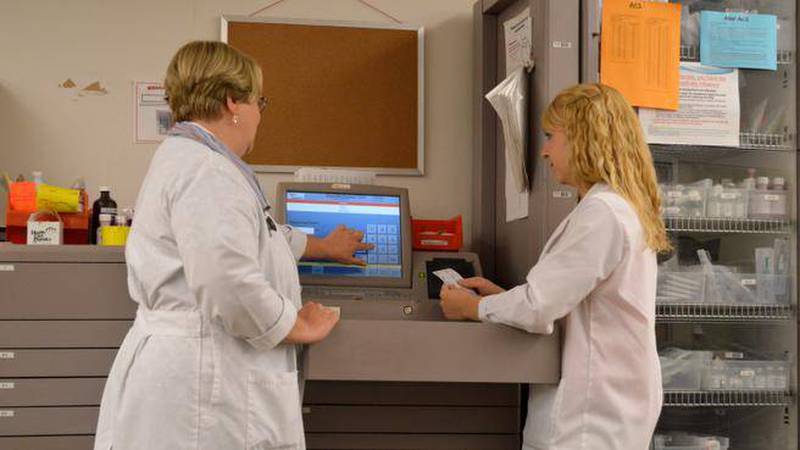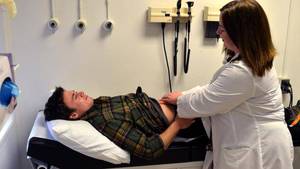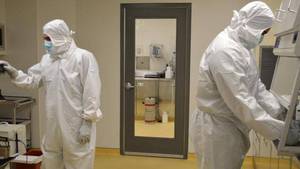On any busy unit at the QEII Health Sciences Centre, Laurel Ross knows that getting the correct medications and doses to patients quickly and safely is often a matter of life or death.
As technical pharmacy operations manager at the QEII, Laurel was thrilled when her team received approval in July 2015 to implement 19 new Pyxis automated medication-dispensing cabinets at the QEII’s Victoria General site. The QEII Foundation provided $1.2-million toward this $4.8-million project, with the remainder funded by the province. Currently at the QEII there are 14 Pyxis cabinets but that number is growing. By 2017, Anne Hiltz, director of the QEII’s Pharmacy and Renal Program, hopes to have 40 more cabinets in place.
“It is a much safer system for our patients,” says Anne. “It is becoming the standard of care across the country.”
With the pharmacist’s review and approval of medication orders, the nurse then goes to the locked, automated medication-dispensing machine located on the unit, to get the required medication. To ensure the system is secure, it uses biometrics. The nurse must place her fingerprint on a computer screen before she can access the system. Inside the cabinet, each medication is individually packaged and has its own compartment.
“Patients can get their medication much faster than in the past,” says Anne.
In areas of the QEII where the Pyxis system is not being used, pharmacy technicians still provide nurses with trays filled with a 24-hour supply of medications for each patient. But in a 24-hour period, a patient’s condition and medical needs can change dramatically, so pharmacists are often required to send interim doses to an inpatient unit. This process results in an increased risk of medication doses either not making it to the unit or arriving late. Administering medications, such as antibiotics, as quick as possible can be critical for some patients.
“Pyxis is real time,” says Laurel. “You avoid missing unit doses and turnaround time is greatly improved.”
The Pyxis system also provides tighter controls on narcotics. For example, if discrepancies were found in a morphine supply, it would be much easier to detect. The software tracks every time the narcotic is dispensed and by which nurse. The software also helps staff flag trends or problems without having to sift through mounds of paperwork. When medications are running low in a dispensing machine, or close to expiring, the Pyxis system will alert pharmacy staff, making things more efficient and reducing the amount of medication waste.
The Pyxis system has been implemented in all emergency room departments and intensive care units across the QEII, as well as the night cupboards and the QEII’s Nova Scotia Rehabilitation Centre. The goal is to eventually replace the 24-hour unit dose system across the QEII with the Pyxis dispensing cabinet.








